Secured and unsecured credit cards help people build credit in different ways. Secured cards need a refundable deposit, usually the same as the credit limit. Unsecured cards don’t require a deposit. Secured cards help those with poor or no credit history. Unsecured cards are for people with good credit.
Each card type has its own set of requirements, like credit score, income, and age. Knowing the differences between secured and unsecured cards can help you pick the right one for your financial goals.
Key Takeaways
- Secured credit cards require a refundable security deposit, while unsecured cards do not.
- Secured cards are often used to build credit, while unsecured cards are for those with good credit.
- Requirements for secured and unsecured cards can differ in terms of credit score, income, and age.
- Evaluating the features and benefits of each type of card can help you choose the best option for your financial situation.
- Understanding the key differences between secured and unsecured credit cards is crucial when building or rebuilding your credit.
Secured Vs Unsecured Credit Card: Key Differences
There are two main types of credit cards: secured and unsecured. It’s important to know the differences to pick the right one for your money needs.
Deposit Required?
Secured and unsecured credit cards differ in one big way: the need for a deposit. A secured credit card asks for a refundable deposit, often the same as the credit limit. On the other hand, an unsecured credit card doesn’t require a deposit.
Credit Score Requirements
Secured credit cards usually need lower credit scores than unsecured cards. This makes them a good choice for people with bad or no credit who want to build their credit.
Annual Fees
Annual fees for these cards also vary. Secured cards might have higher annual fees because the card issuer takes on more risk.
Credit Building
Both types of cards help with building credit by reporting your payments to credit bureaus. But, secured cards might help faster because they have lower credit limits that are easier to manage.
Rewards and Perks
Unsecured credit cards often have better rewards and perks. They might offer higher credit limits, cash back, or other benefits that secured cards don’t.
| Feature | Secured Credit Card | Unsecured Credit Card |
|---|---|---|
| Security Deposit | Required, usually equal to credit limit | Not required |
| Credit Score Requirements | Lower | Higher |
| Annual Fees | Potentially higher | Potentially lower |
| Credit Building | Effective, but may be faster | Effective, but may be slower |
| Rewards and Perks | Limited | More prevalent |
Knowing these differences helps you choose the right type of card for your financial goals and credit-building needs.
What is a Secured Credit Card?
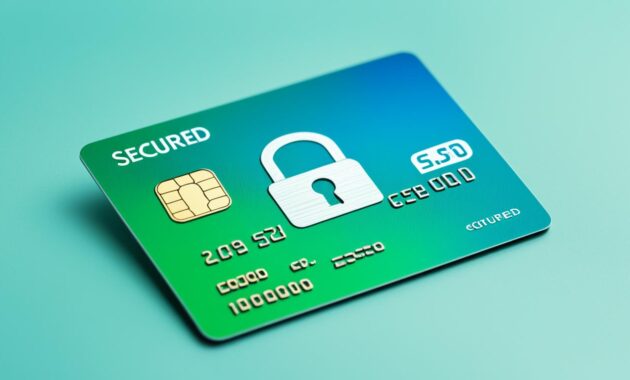
A secured credit card is for people with bad or no credit. It’s different from regular credit cards because you need to put down a refundable deposit. This deposit is as much as the credit limit and acts as security. It helps people build or fix their credit over time.
How Secured Credit Cards Work
Getting a secured credit card is easy. You give a refundable deposit, which can be $200 to $2,000. This deposit is your credit limit. You can get it back, and the card company tells the credit bureaus how you pay. Making payments on time shows you’re good with credit, helping to build credit and better your score.
Benefits of Secured Credit Cards
- Accessible to individuals with poor or no credit: Secured cards help people with bad or no credit get credit and start building a good history.
- Reporting to credit bureaus: Paying on time with a secured card means your payments are reported to the big credit bureaus. This helps you rebuild your credit.
- Potential for graduation to an unsecured card: If you use your card wisely, some card issuers might let you switch to an unsecured credit card. You get your deposit back too.
- Building credit from the ground up: For those with no credit history, a secured credit card is a great way to start building credit.
“Secured credit cards are an excellent tool for individuals looking to establish or rebuild their credit history. By making timely payments and demonstrating responsible credit behavior, users can gradually improve their creditworthiness and potentially graduate to an unsecured card.”
What is an Unsecured Credit Card?
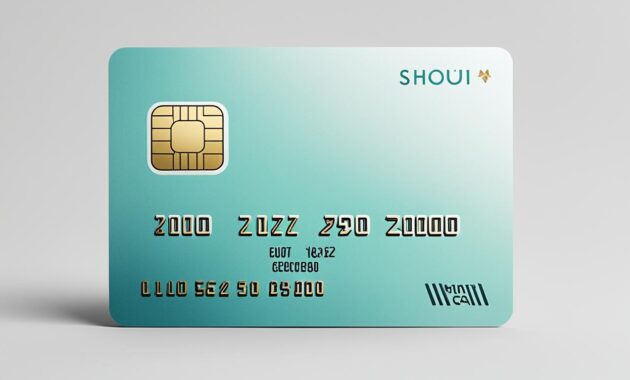
An unsecured credit card doesn’t need a security deposit. It’s different from secured cards, which require a deposit to set your credit limit. Unsecured cards are for people with good or excellent credit. They offer more benefits like rewards, lower interest rates, and higher limits than secured cards.
People choose credit cards without a deposit to improve or rebuild their credit. These cards help you start a credit history. This can make it easier to get loans, mortgages, or other financial products later.
| Feature | Unsecured Credit Card | Secured Credit Card |
|---|---|---|
| Deposit Required | No deposit required | Deposit required to establish credit limit |
| Credit Score Requirements | Good to excellent credit score | Bad to fair credit score |
| Annual Fees | May have lower or no annual fees | May have higher annual fees |
| Credit Building | Can help build credit history | Designed specifically for credit building |
| Rewards and Perks | May offer more rewards and perks | Fewer rewards and perks |
When looking at unsecured credit cards, check out what different providers offer. This way, you can pick the card that meets your financial needs and goals.
Qualifying for a Secured vs Unsecured Card

Getting a credit card has different rules for secured and unsecured cards. Knowing the differences helps you pick the right card for your money situation.
Age Requirements
To get a secured credit card, you must be 18 or older. This rule is the same for both secured and unsecured cards. But, some unsecured cards might want you to be 21 or older.
Credit History and Score
Secured credit cards are for people with little or no credit history and a low credit score. Unsecured cards need a better credit score and a solid credit history to apply.
Income Requirements
Secured cards usually ask for less income than unsecured cards. This is because the security deposit lowers the risk. Unsecured cards often want more income to qualify.
| Criteria | Secured Credit Card | Unsecured Credit Card |
|---|---|---|
| Age Requirements | Typically 18+ | Often 21+ |
| Credit History and Score | Lower credit score and history | Higher credit score and longer history |
| Income Requirements | Lower income requirements | Higher income requirements |
Knowing the requirements for both secured and unsecured cards helps you choose the best one for your finances and credit.
Key Features: Secured vs Unsecured Cards
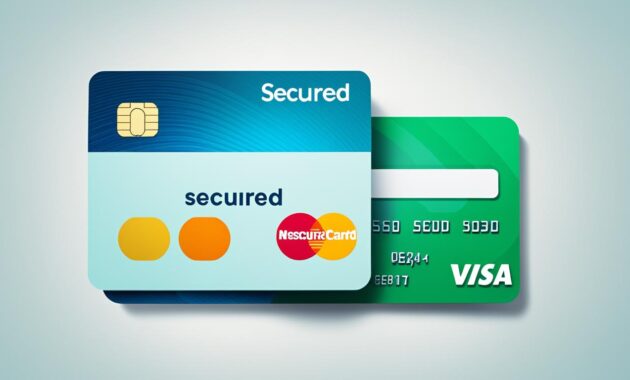
Secured and unsecured credit cards have different features. Knowing these differences can help you pick the right card for your needs.
Credit Limits
Secured credit cards usually have lower limits than unsecured cards. They start around $200, based on your deposit. Unsecured cards often give you more spending power with higher limits.
Interest Rates
Interest rates vary between secured and unsecured cards. Secured cards have higher interest rates because they’re riskier for the issuer. Unsecured cards, based on your credit score, usually have lower interest rates. This makes them better for long-term use.
Rewards Programs
Secured cards may have lower credit limits and higher interest rates, but some offer rewards and perks. For example, the Discover it® Secured Credit Card gives cash back on purchases. Unsecured cards usually have better rewards programs, offering more perks and benefits to users.
Knowing the differences between secured and unsecured credit cards helps you choose the best one for your financial goals and credit-building needs.
Secured vs Unsecured Credit Cards for Students

Student credit cards are usually unsecured. They are for young adults with little credit history and low income. Unlike secured cards, they don’t need a deposit. But, they start with lower credit limits to help students use credit wisely and build their credit.
Secured cards need a refundable deposit that becomes the credit limit. Student cards are unsecured. They let students get credit without a deposit. This makes them easier for college students with limited credit to get.
Key Features of Student Credit Cards
- No security deposit required
- Lower credit limits to encourage responsible usage
- Potential for rewards and cashback programs
- Focused on building credit history and credit scores
Student credit cards have features for young adults, like rewards and financial education. They let students start building a credit history and credit scores without needing a secured credit card.
| Feature | Secured Credit Card | Unsecured Student Card |
|---|---|---|
| Deposit Required | Yes | No |
| Credit Limit | Equal to Deposit | Lower Limit |
| Credit Building | Yes | Yes |
| Rewards | Limited | Potential Rewards |
By knowing the differences between secured and unsecured student credit cards, college students can pick the best one for their finances and credit goals.
From Secured to Unsecured: Upgrading Your Card
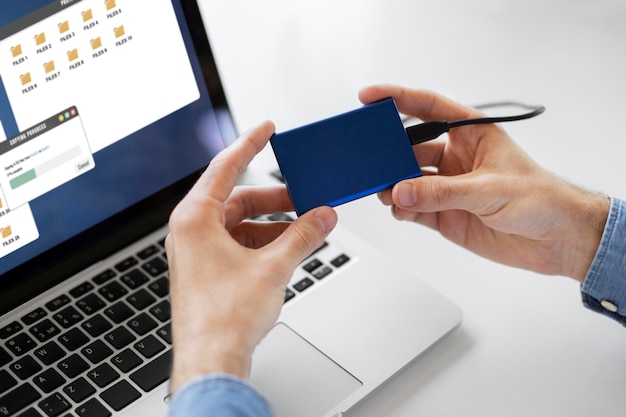
If you’ve been using a secured credit card to build your credit, you might be able to switch to an unsecured card later. This change can give you more freedom and possibly better rewards. But, each card issuer has its own rules for upgrading, so knowing what they want is key.
Requirements for Upgrading
To move from a secured to an unsecured credit card, you usually need to show you handle credit well. This means making on-time payments regularly. Issuers also want to see your credit score going up before they’ll upgrade your card.
When you upgrade, the deposit you put down for the secured card gets returned. Your account turns into an unsecured card with a larger credit limit. This is a big step in building your credit, proving you can manage credit well.
Remember, the rules for upgrading can differ between card issuers. Some might want a certain number of on-time payments or a specific credit score. Always check with your card issuer to know the exact steps to upgrade your secured card to an unsecured one.
“Upgrading from a secured to an unsecured credit card can be a significant milestone in your credit-building journey, as it demonstrates your ability to manage credit responsibly.”
Best Secured Credit Cards of 2023
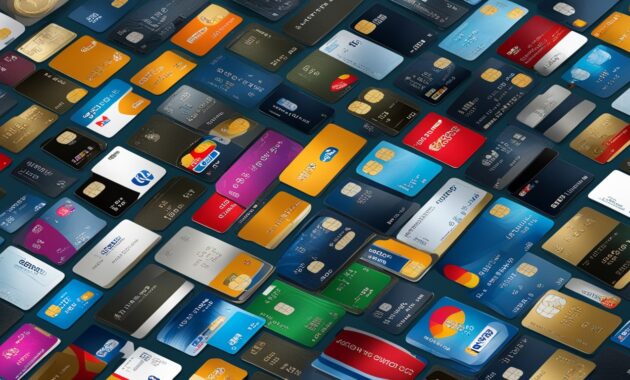
Secured credit cards are great for rebuilding or starting your credit. They need a refundable deposit that becomes your credit limit. This can help you move to an unsecured card later. Here are three top secured credit cards for 2023:
Discover it® Secured Credit Card
The Discover it® Secured Credit Card is a top choice. It offers 2% cash back at gas stations and restaurants on up to $1,000 in purchases each quarter. It has a low $200 minimum deposit and no annual fee, perfect for those new to credit or improving their score.
Capital One Quicksilver Secured Cash Rewards Credit Card
The Capital One Quicksilver Secured Cash Rewards Credit Card gives 1.5% cash back on all buys. It has a $200 minimum deposit and no annual fee. This card is great for building credit and earning rewards.
Capital One Platinum Secured Credit Card
The Capital One Platinum Secured Credit Card has a low $49, $99, or $200 refundable deposit. It’s easy to get for many credit profiles. It doesn’t offer rewards but is a good start for new credit or rebuilding credit.
Choosing the right secured credit card is key. Use it wisely by paying on time and keeping your credit use low. With the right card and good credit habits, you can achieve success in the future.
Secured Vs Unsecured Credit Card: Building Credit

Both secured and unsecured credit cards are great for building credit. The main thing is to use the card wisely. This means paying on time and not using too much of your credit.
It doesn’t matter if your card is secured or unsecured. If the card activity is reported to the big credit bureaus, it can help improve your credit score and credit history over time. This is because how you pay and how much you use your credit are key factors in your credit score.
To build credit well, you need to use your credit card right. This means:
- Making all payments on time
- Keeping your credit use low (less than 30% is best)
- Checking your credit report often for mistakes
By doing these things, you can build credit with either a secured or unsecured credit card. The choice depends on your credit situation and what you want to achieve financially.
| Metric | Secured Card | Unsecured Card |
|---|---|---|
| Deposit Required | Yes | No |
| Credit Score Requirements | Lower | Higher |
| Annual Fees | More Common | Less Common |
| Credit Building | Effective | Effective |
| Rewards and Perks | Limited | More Extensive |
“The key to building credit is to use your credit card responsibly, regardless of whether it’s secured or unsecured.”
Choosing the Right Card for Your Needs
When picking between a secured or unsecured credit card, think about your credit needs and financial goals. Secured cards are great for those with poor or no credit history. They help build credit with a refundable deposit. Unsecured cards are better for people with established credit. They offer rewards and perks.
Look at credit limits, interest rates, fees, and rewards programs to find the right card. Think about your credit needs and financial goals. Pick the card that meets your needs best.
| Feature | Secured Card | Unsecured Card |
|---|---|---|
| Credit Limit | Based on security deposit | Based on creditworthiness |
| Interest Rates | Typically higher | Varies based on creditworthiness |
| Fees | May have annual fees | May have annual fees or other charges |
| Rewards | Limited or no rewards | Variety of rewards programs available |
Think about your credit needs and financial goals carefully. This way, you can pick the credit card that suits you best, whether it’s a secured or unsecured card.
“The right credit card can be a powerful tool for achieving your financial goals, whether it’s building credit or earning rewards.”
Also Read : What Are The Key Benefits Of Using A Virtual Credit Card?
Conclusion
Secured and unsecured credit cards have their own benefits. Secured cards are for people with poor or no credit history. They need a refundable deposit but can help improve your credit over time. Unsecured cards offer better terms and rewards for those with good credit scores.
Using your card wisely and paying on time is crucial for building credit. The best card for you depends on your financial situation and goals. Knowing the differences between secured and unsecured cards helps you choose the right one for your needs.
This guide has given you the insights to understand secured and unsecured credit cards. With the right card and smart financial habits, you can manage your credit well. This will help you build a better financial future.
FAQs
Q: What is the difference between secured and unsecured credit cards?
A: The main difference between secured and unsecured credit cards lies in the requirement of a security deposit. A secured card requires a deposit that acts as collateral, while an unsecured card does not require a deposit and is granted based on your creditworthiness.
Q: How do I apply for a secured credit card?
A: To apply for a secured credit card, you typically need to provide personal information, proof of income, and make a cash deposit that will serve as your credit line. This deposit is usually refundable when you close the account or upgrade to an unsecured card.
Q: What are the requirements for getting a secured card?
A: Requirements for getting a secured card usually include being at least 18 years old, providing a valid ID, proof of income, and making an initial deposit. The specific amount may vary depending on the credit card issuer.
Q: Can I upgrade my secured credit card to an unsecured credit card?
A: Yes, many credit card issuers allow you to upgrade your secured credit card to an unsecured card once you have demonstrated responsible usage and improved your credit score.
Q: How does using a secured card help you build credit?
A: Using a secured card can help you build credit by reporting your payment history and credit utilization to the three major credit bureaus. Consistent, on-time payments can positively impact your credit score.
Q: What happens if I close my secured credit card?
A: If you close your secured credit card, the credit card issuer will typically refund your security deposit, provided your account is in good standing. However, closing the card may impact your credit score due to changes in your credit utilization ratio.
Q: Can I qualify for an unsecured credit card if I have bad credit?
A: Qualifying for an unsecured credit card with bad credit can be challenging, but some unsecured credit cards may be available for individuals with lower credit scores. It may be beneficial to first apply for a secured card to build your credit before applying for an unsecured card.
Q: What type of credit line can I expect with a secured credit card?
A: The credit line on a secured credit card is usually equal to the amount of your security deposit. For example, if you deposit $200, your credit line will typically be $200.
Q: Are secured credit cards a good option for building credit?
A: Yes, secured credit cards can be an excellent option for building credit, especially for individuals with poor credit or no credit history. They allow you to demonstrate responsible credit usage, which can help improve your credit score over time.
Source Links
- https://www.bankrate.com/credit-cards/building-credit/secured-vs-unsecured-credit-cards/
- https://www.discover.com/credit-cards/card-smarts/secured-vs-unsecured-credit-card/
- https://www.capitalone.com/learn-grow/money-management/secured-vs-unsecured-credit-card/